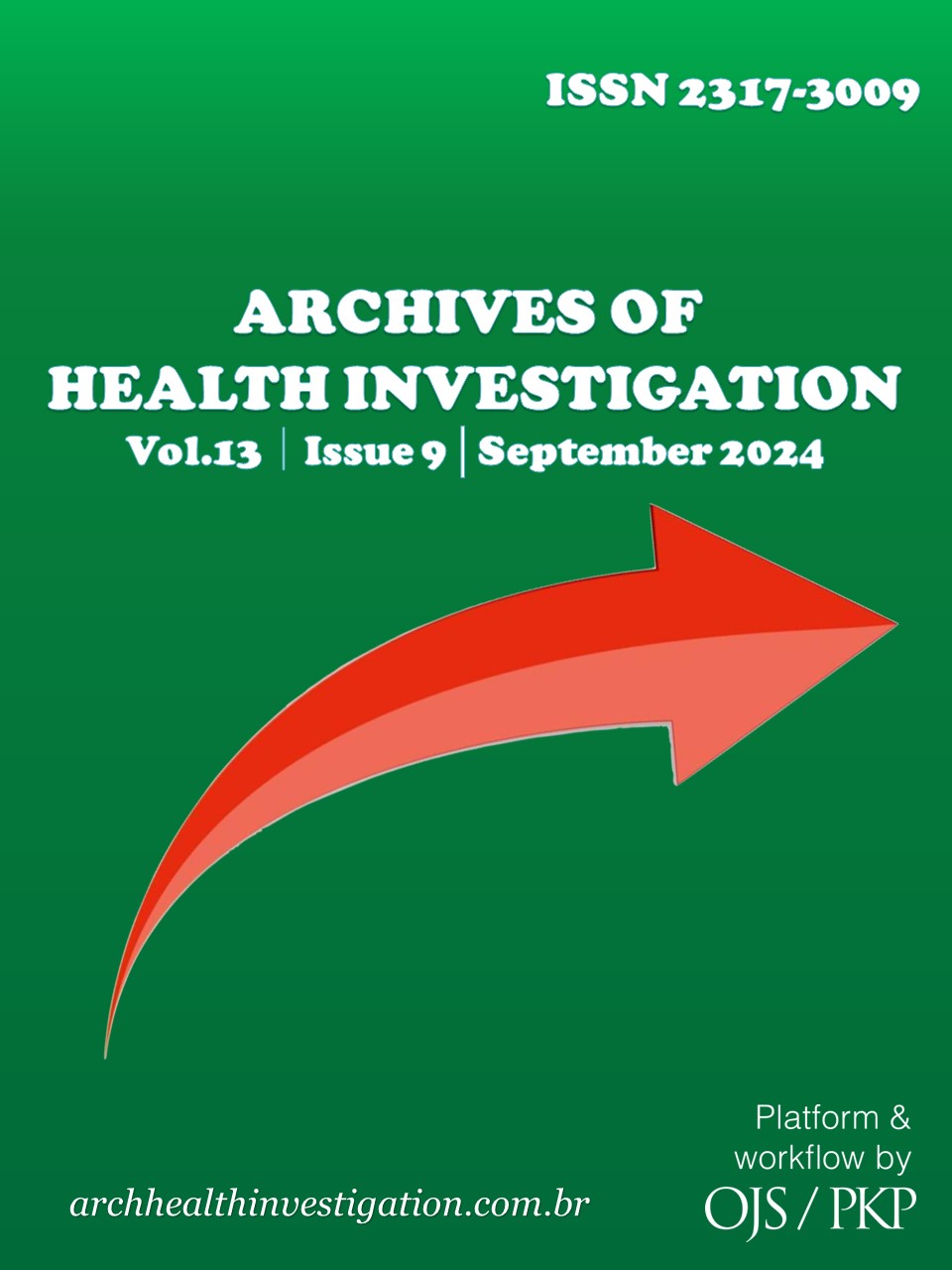Health Education Strategies to Increase Pap Smear Testing Uptake in Women
DOI:
https://doi.org/10.21270/archi.v13i9.6448Keywords:
Health Education, Papanicolaou Test , Cervical Intraepithelial Neoplasia , Treatment Adherence and Compliance , Early Medical InterventionAbstract
Cervical cancer is one of the leading causes of death among women in Brazil, with high incidence rates expected for the coming years. This study aims to evaluate the effectiveness of health education strategies in promoting adherence to Pap smear screening, which is essential for the early detection of cervical cancer precursor lesions. The integrative literature review was conducted following the PRISMA guidelines, with a detailed analysis of articles that address educational interventions in public health. The results indicate that educational campaigns, especially in community settings, are effective in increasing adherence to screening, contributing significantly to reducing the incidence and mortality of cervical cancer. The analysis highlighted the importance of effective public policies and continuous education of women about the importance of screening, in addition to identifying barriers such as limited access to health services and lack of knowledge, which need to be overcome to improve screening rates. This study reinforces the need for continued efforts to promote educational strategies as a crucial tool in the prevention of cervical cancer.
Downloads
References
Ferlay J, Colombet M, Soerjomataram I, Parkin DM, Piñeros M, Znaor A, Bray F. Cancer statistics for the year 2020: An overview. Int J Cancer. 2021;149(4):778-89.
Instituto Nacional de Câncer José Alencar Gomes da Silva. Estimativa 2023: incidência do Câncer no Brasil. Rio de Janeiro: INCA, 2022. Disponível em: https://www.gov.br/inca/ptbr/assuntos/cancer/numeros/estimativa Acesso em: 25 novembro 2022.
Bruni L, Albero G, Serrano B, Mena M, Gómez D, Muñoz J, Bosch FX, de Sanjosé S. ICO/IARC Information Centre on HPV and Cancer (HPV Information Centre). Human Papillomavirus and Related Diseases in Central African Republic. Summary Report 10 December 2018. Disponível em: https://hpvcentre.net/statistics/reports/CAF.pdf. Acesso em: 25 novembro 2022.
Zhang C, Li X, Zhong L, Wang Y, Yin J, Dai Y, et al. Assessment of the relationships between invasive endocervical adenocarcinoma and human papillomavirus infection and distribution characteristics in China: According to the new WHO classification criteria in 2020. Cancer Epidemiol. 2023;86:102442.
Estudo Epidemiológico sobre a Prevalência Nacional de Infecção pelo Papilomavírus Humano POP-Brasil 2015/2017. Associação Hospitalar Moinhos de Vento. – Porto Alegre, 2020.
Nelson CW, Mirabello L. Human papillomavirus genomics: Understanding carcinogenicity. Tumour Virus Res. 2023;15:200258.
Rosalik K, Tarney C, Han J. Human Papilloma Virus Vaccination. Viruses. 2021;13(6):1091.
Russomano F. Principais questões sobre HPV: prevenção, diagnóstico e abordagem. Portal de Boas Práticas em Saúde da Mulher, da Criança e do Adolescente. 2020. Disponível: https://portaldeboaspraticas.iff.fiocruz.br/atencao-mulher/principais-questoes-sobre-hpv-prevencao-diagnostico-e-abordagem/ Acesso em: 10 de junho de 2024
Instituto Nacional de Câncer José Alencar Gomes da Silva. Detecção precoce do câncer. Rio de Janeiro: INCA, 2022. Disponível em: https://www.inca.gov.br/publicacoes/livros/deteccao-precoce-do-cancer (abre em nova janela). Acesso em: 14 de junho de 2024.
Ministério da Saúde. Vacina contra o HPV: a melhor e mais eficaz forma de proteção contra o câncer de colo de útero Disponível em: https://bvsms.saude.gov.br/vacina-contra-o-hpv-a-melhor-e-mais-eficaz-forma-de-protecao-contra-o-cancer-de-colo-de-utero/. Acesso em: 12 de junho de 2024.
Ministério da Saúde. Ministério da Saúde adota esquema de vacinação em dose única contra o HPV. Disponível em: https://www.gov.br/saude/pt-br/assuntos/noticias/2024/abril/ministerio-da-saude-adota-esquema-de-vacinacao-em-dose-unica-contra-o-hpv. Acesso em: 12 de junho de 2024.
Lima MS, Brito ÉAC, Siqueira HFF, Santos MO, da Silva AM, Nunes MAP, Brito HLF, Lima MMM, Cipolotti R, Lima CA. Trends in cervical cancer and its precursor forms to evaluate screening policies in a mid-sized Northeastern Brazilian city. PLoS One. 2020;15(5):e0233354.
Girianelli VR, Gamarra CJ, Silva GA. Disparidades na mortalidade por câncer de colo de útero e mama no Brasil. Rev Saude Pública. 2014;48(3):459-67.
Moher D, Liberati A, Tetzlaff J, Altman DG; PRISMA Group. Preferred reporting items for systematic reviews and meta-analyses: the PRISMA statement. PLoS Med. 2009;6(7): e1000097.
Rayyan. Faster Systematic Review. 2024. Disponível em: https:// www.rayyan.ai/. Acesso em: 12 de junho de 2024.
Alves SR, Alves AO, Assis MCS. Educação popular em saúde como estratégia à adesão na realização do exame colpocitológico. Cienc cuid saúde. 2016;15(3):570-74.
Oliveira PSD, Lopes DA, Pinho L, Silva Junior RFF, Oliveira HED, Barbosa HA. Adesão das mulheres ao exame preventivo de câncer de colo de útero: um ensaio comunitário. Rev enferm UFPE. 2016;10(2):442-48.
Carvalho RS, Nunes RMV, Oliveira JD, Davim RMB, Rodrigues ESRC, Menezes PCM. Perfil preventivo do câncer de colo uterino em trabalhadoras da enfermagem. Rev Enferm UFPE. 2017;11(6):2257-263.
So VHT, Channon AA, Ali MM, Merdad L, Al Sabahi S, Al Suwaidi H, et al. Uptake of breast and cervical cancer screening in four Gulf Cooperation Council countries. Eur J Cancer Prev. 2019;28(5):451-56.
Barrett-Harrison, KA; Priestley, SR. Determinants of Cervical Cancer Screening among Jamaican Women. West Indian med j. 2018;67(1):9-17.
Conza EMH, Torres ZKS, Martin LE, Hinostroza KAA. Detecção precoce do câncer do colo do útero. Vive Rev Salud. 2020;3(9):264-74
Enriquéz SOG, Cedillo CH, Figueroa YT. Intervenção educacional através do B-learning para melhorar a citologia cervical: experiências de enfermeiras. Esc Anna Nery. 2023;27:e20220198.
Iglesias GA, Larrubia LG, Campos Neto AS, Pacca FC, Iembo T. Conhecimento e adesão ao Papanicolau de mulheres de uma rede de Atenção Primária à Saúde. Rev. Ciênc. Méd. 2019;28(1):21-30
De Almeida, SL et al. Fatores Relacionados à Adesão ao Exame de Papanicolau entre as Mulheres de 18 a 59 anos. ID on line. Rev psicol. 2015;9(27):64-81.
Oliveira D da S, Sá AV, Gramacho R de CCV, Silva R de CV da, Oliveira J de S. Atuação da enfermeira frente aos fatores que interferem na adesão de mulheres idosas ao exame de Papanicolau. Rev Enf Contemp. 2019;8(1):87-93.


